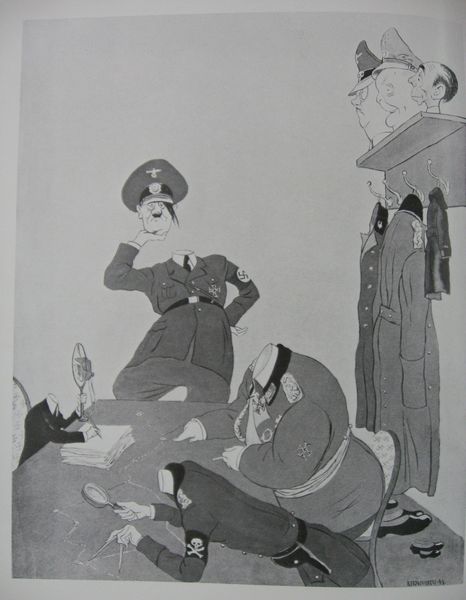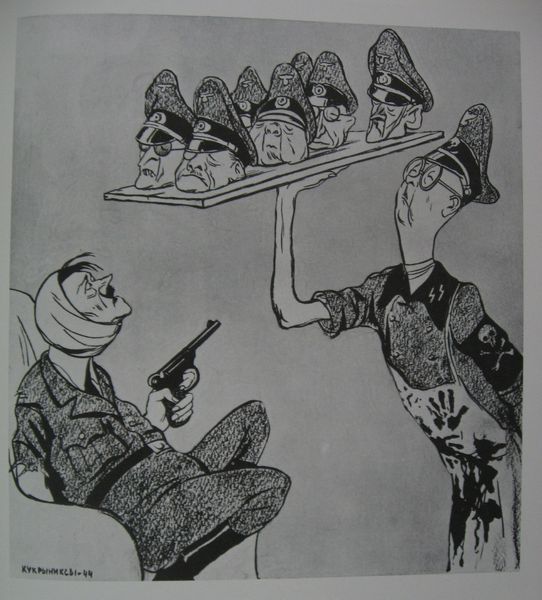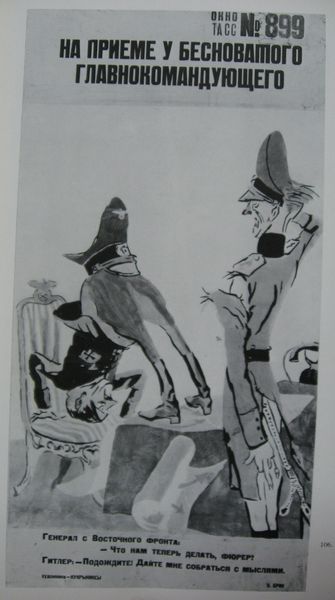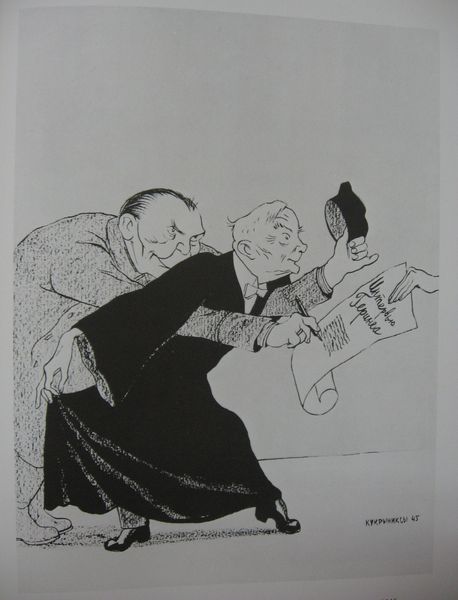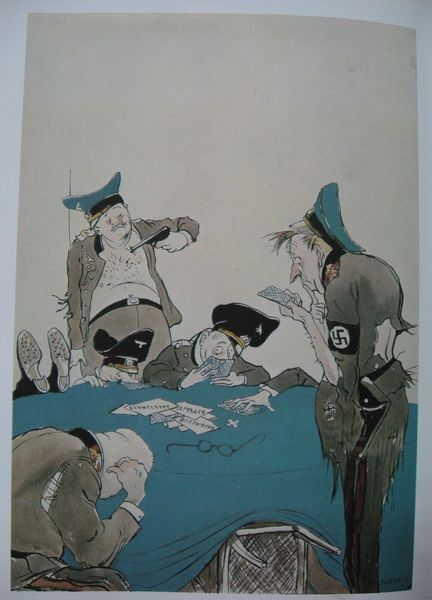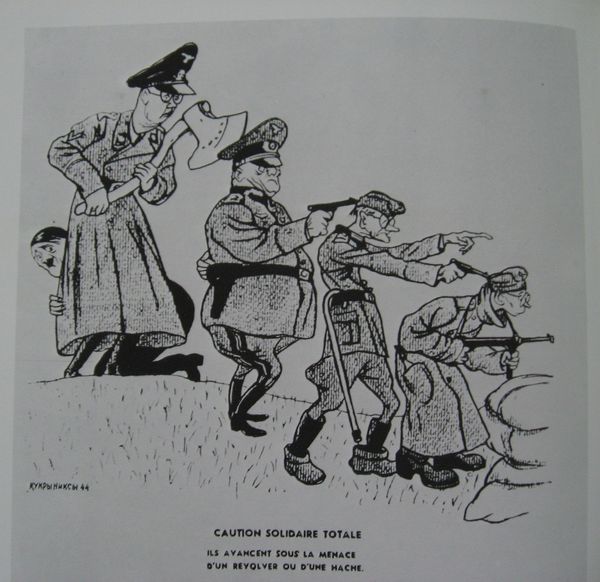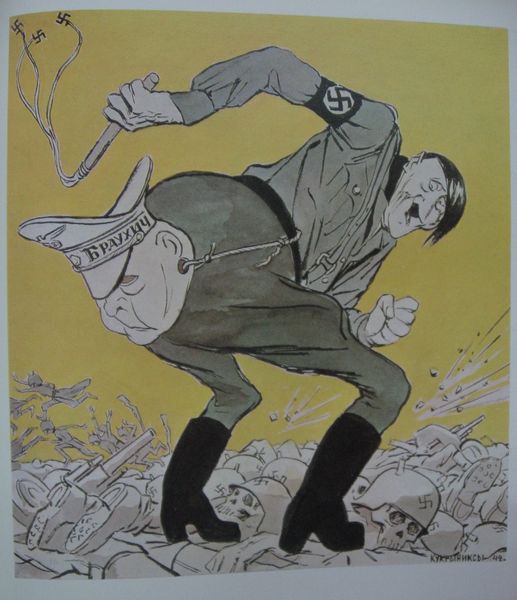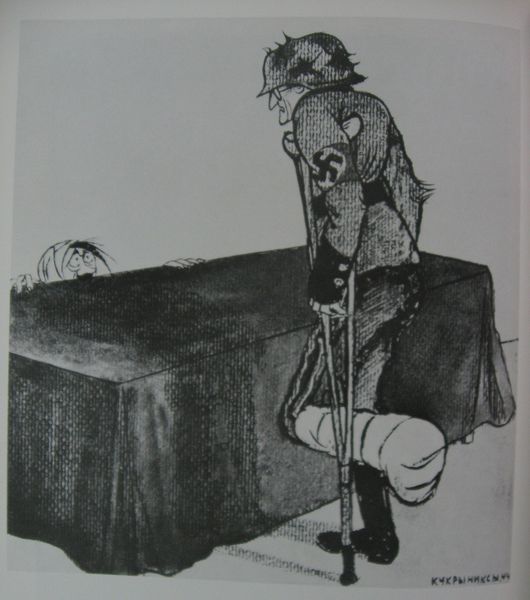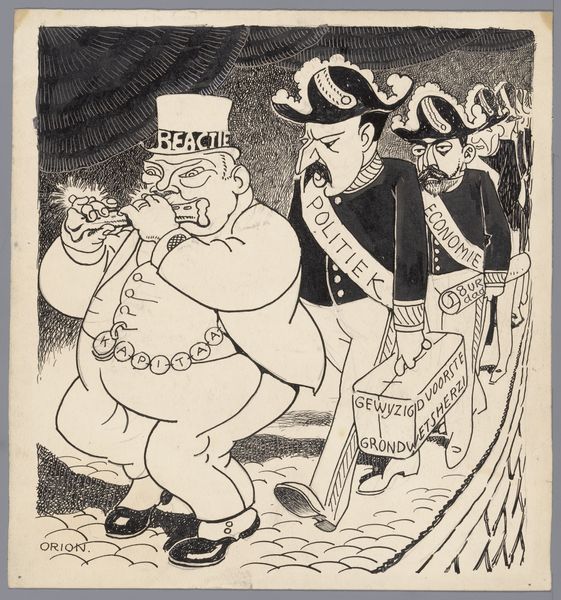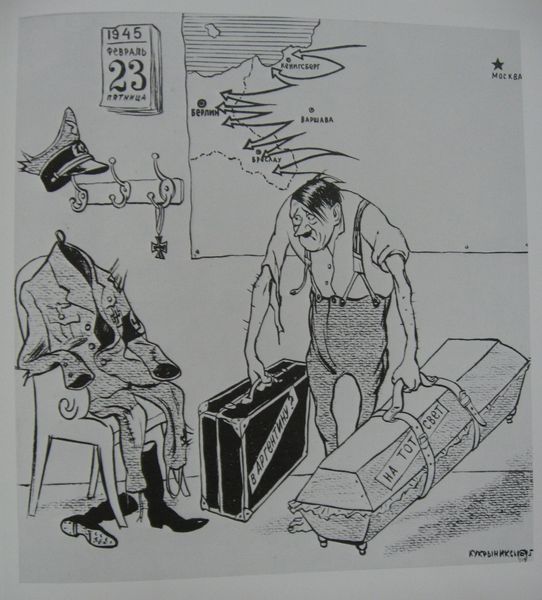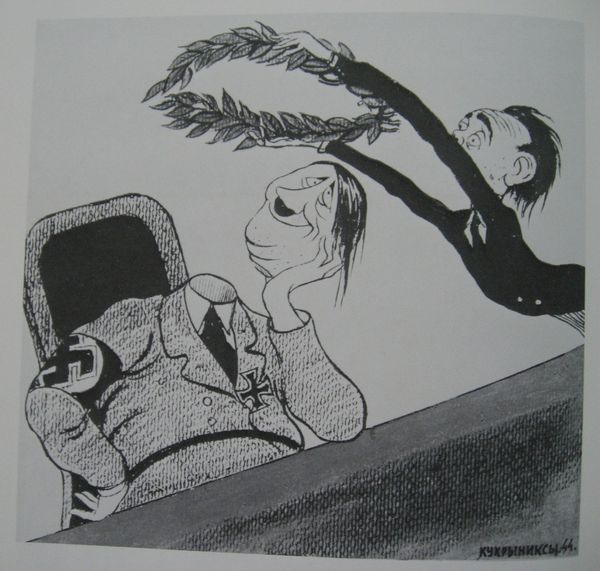
drawing, ink
#
portrait
#
drawing
#
narrative-art
#
caricature
#
war
#
caricature
#
soviet-nonconformist-art
#
social-realism
#
ink
#
surrealism
Copyright: Kukryniksy,Fair Use
Editor: Here we have Kukryniksy's "Untitled" from 1942, created with ink. It immediately strikes me as darkly humorous, even absurd, the way it depicts these figures. How do you interpret this work? Curator: It’s fascinating how Kukryniksy uses caricature during wartime. We need to understand this piece within the framework of Soviet Social Realism, although it playfully subverts that genre. It’s deeply rooted in political commentary, isn't it? How does this artwork position itself within the propaganda machine, and to what extent does it operate as a critique, subtly, perhaps, of power itself? Editor: Well, I see Hitler as a puppeteer, pulling the strings of other figures. It's definitely a statement about control and manipulation. I'm struck by the obvious symbolism, too. Is it a purely anti-fascist statement? Curator: On the surface, yes, absolutely an anti-fascist statement, aligning with the Soviet narrative during the war. But I also see something deeper: an interrogation of authority and the absurd theatre of political power. The swastikas decorating what appear to be marionettes create an incredibly chilling effect when we consider the loss of lives involved. Do you think this portrayal is simply satirical, or does it function as a tool to dehumanize the enemy? Editor: It’s probably a bit of both, I guess, using caricature to diminish their power while simultaneously highlighting the danger they pose. Curator: Exactly. It walks a fine line. It contributes to wartime morale by ridiculing the enemy, but it also makes us think about the mechanisms of totalitarian regimes, not just those of the Nazis but potentially any system where individuals are reduced to puppets. It uses an accessible visual language for its intended audience, reflecting an underlying critique of the relationship between the powerful and the powerless. Editor: That’s a much broader understanding than I initially had. I was too focused on the literal depiction of Hitler. Now, I see a commentary that could extend beyond its immediate context. Curator: And that, ultimately, is how art history speaks to our present, revealing the timeless patterns of power, control, and resistance, isn't it?
Comments
No comments
Be the first to comment and join the conversation on the ultimate creative platform.
